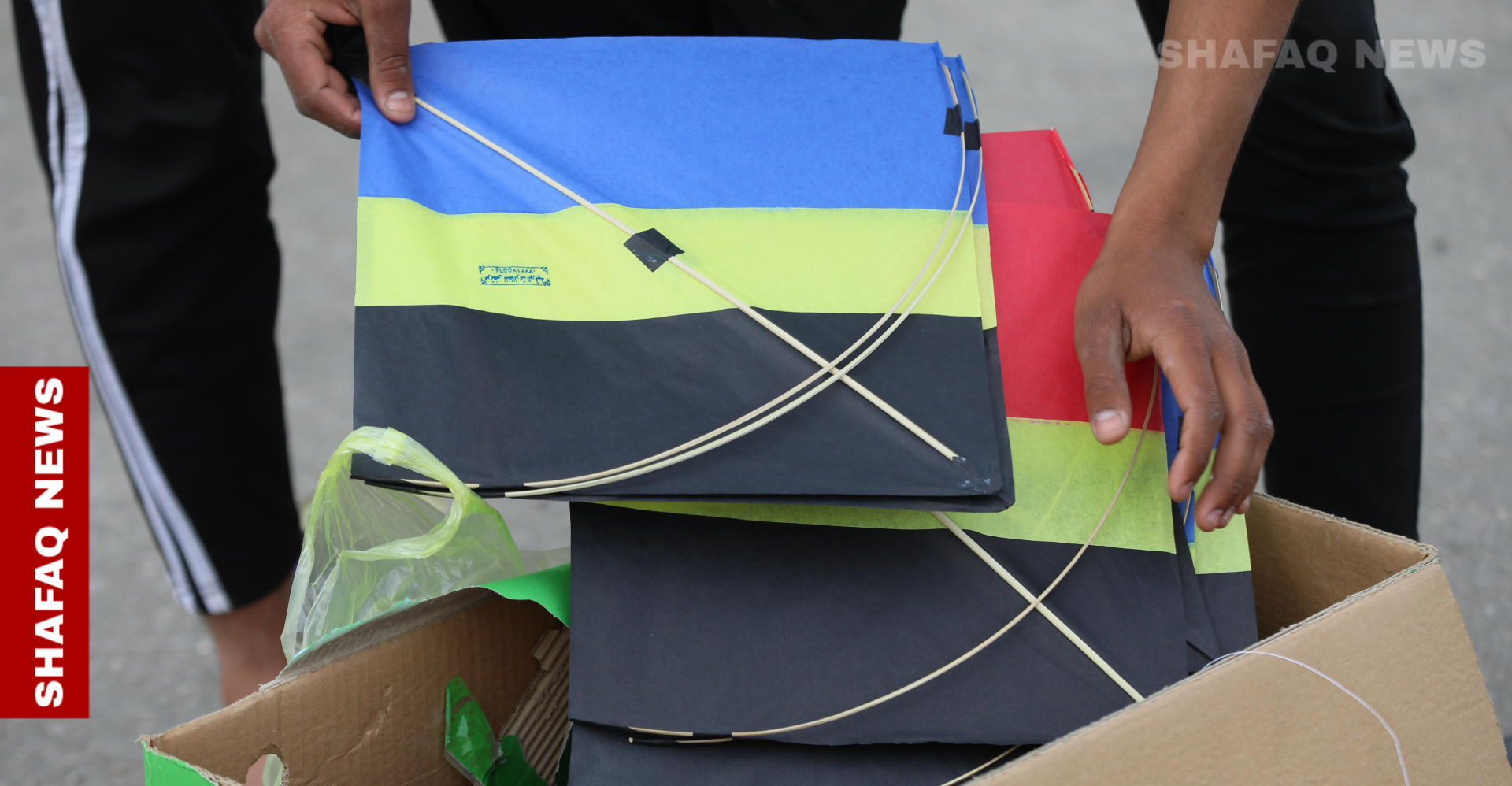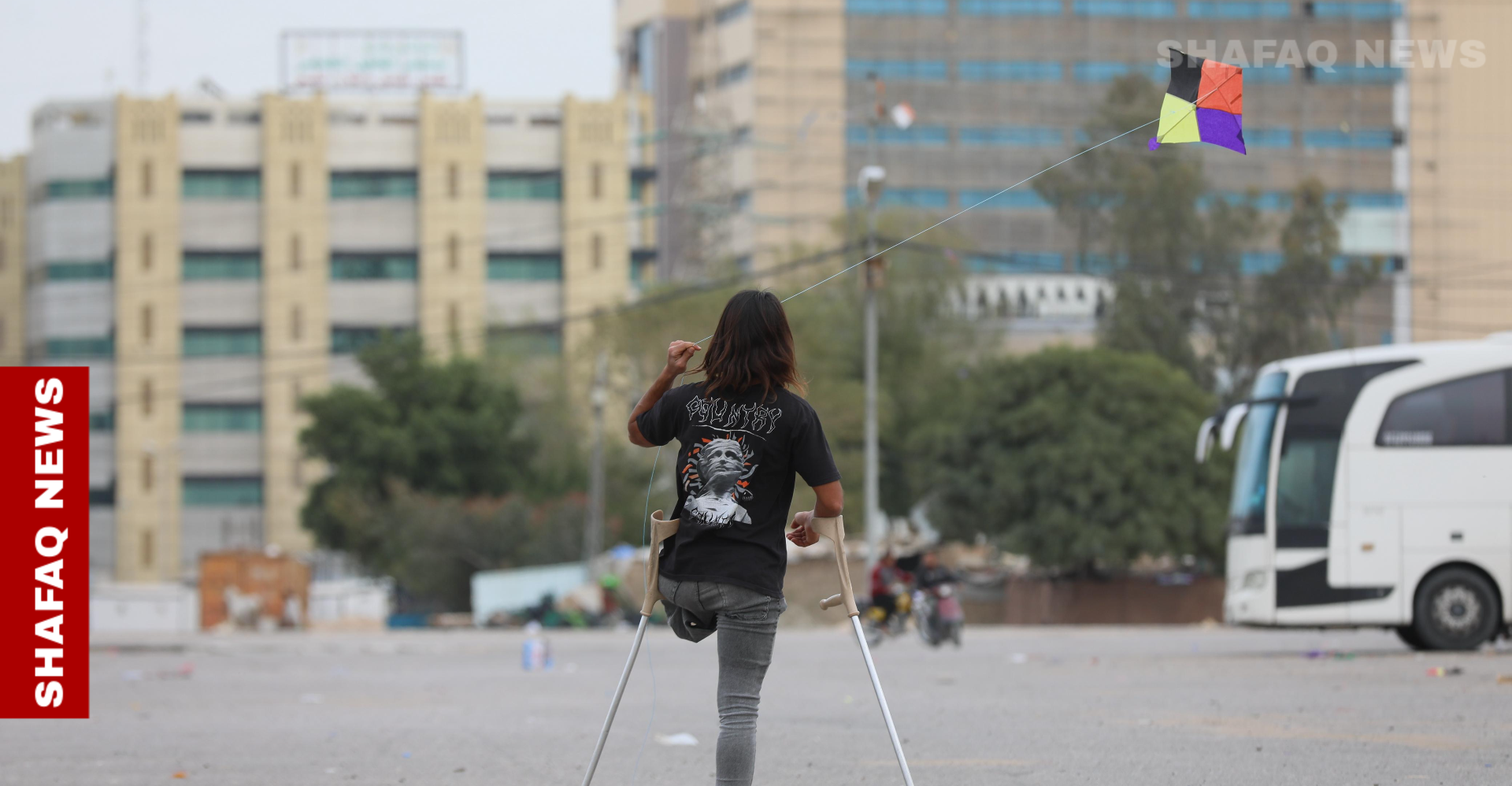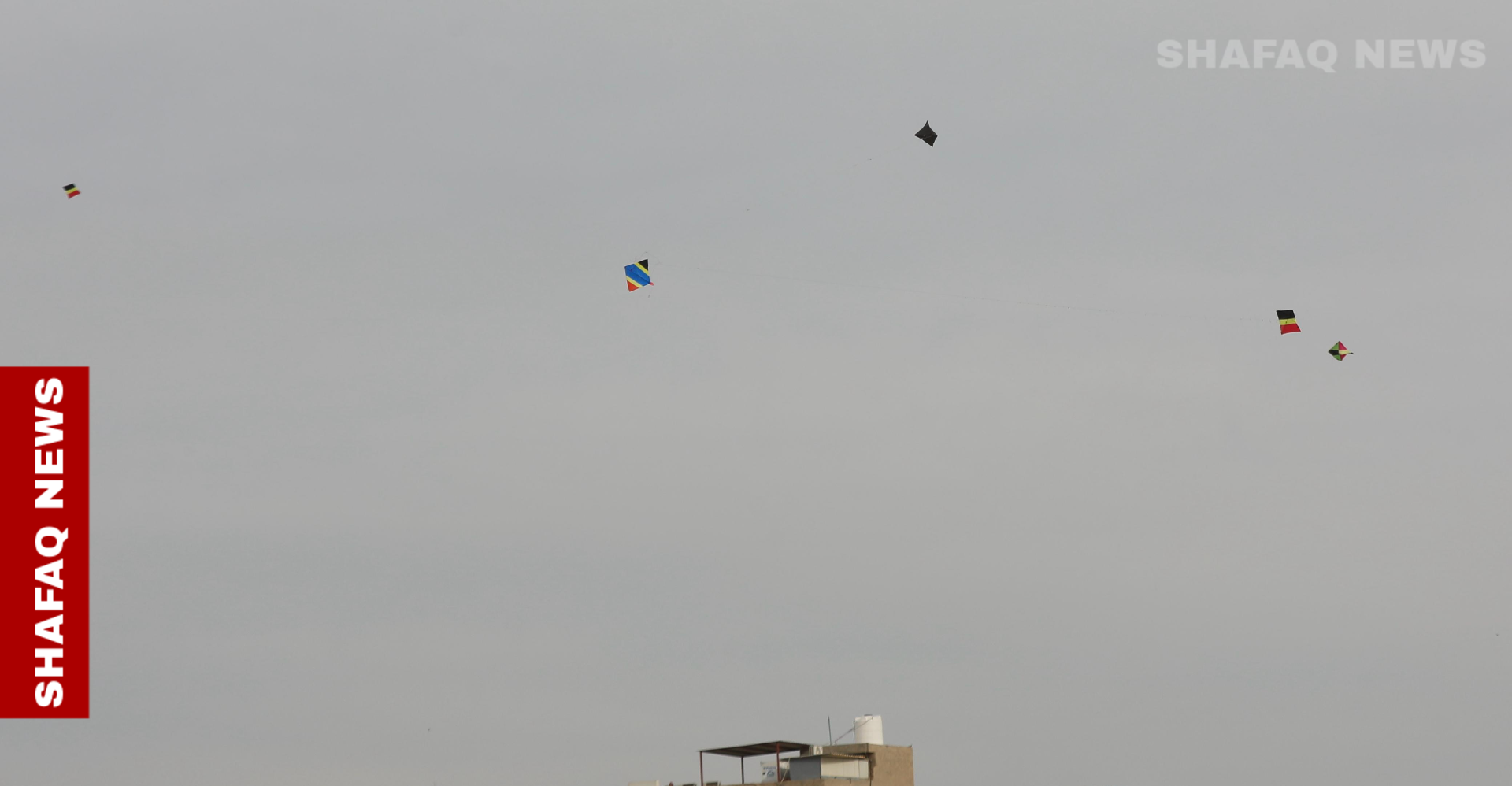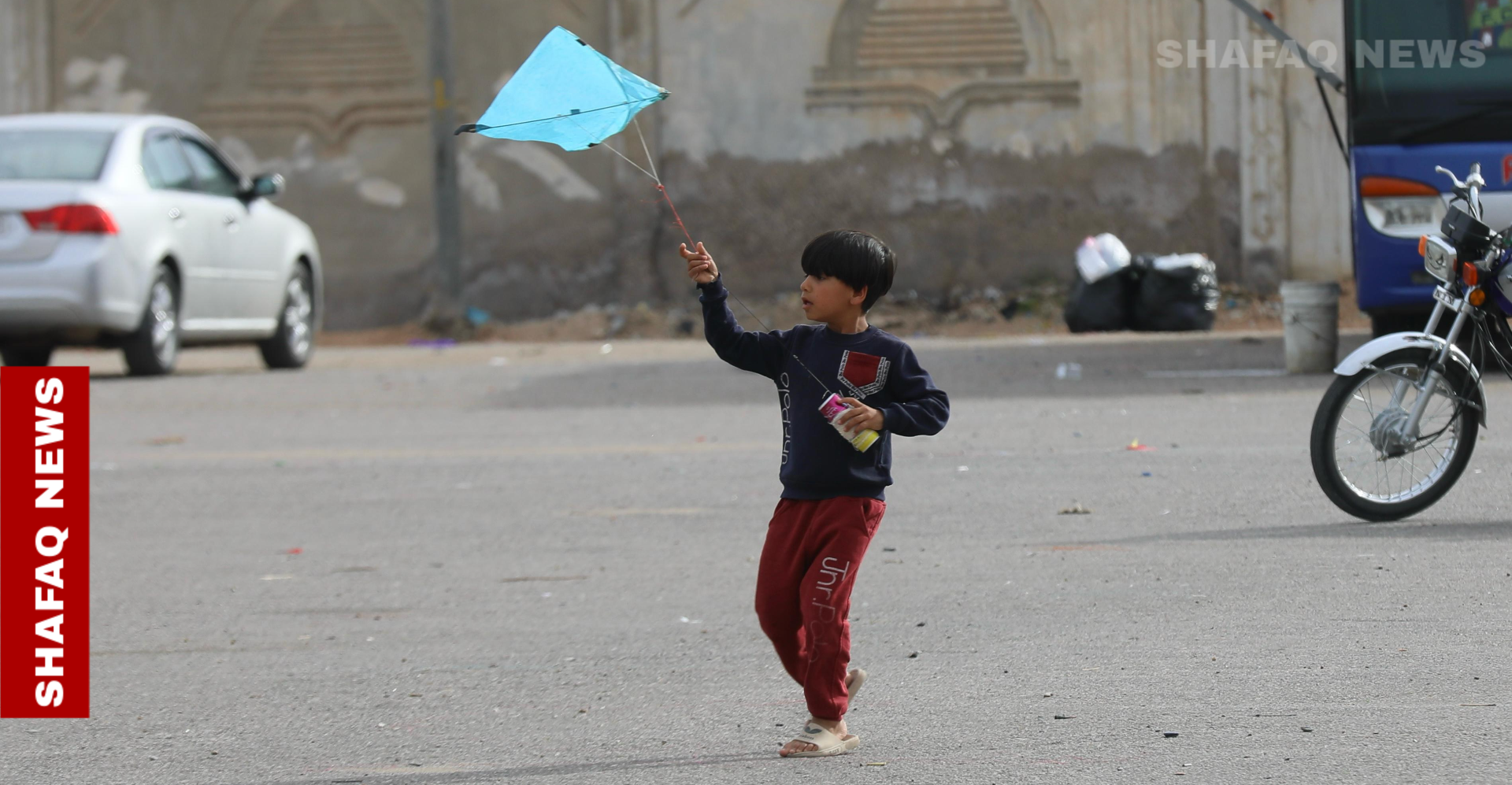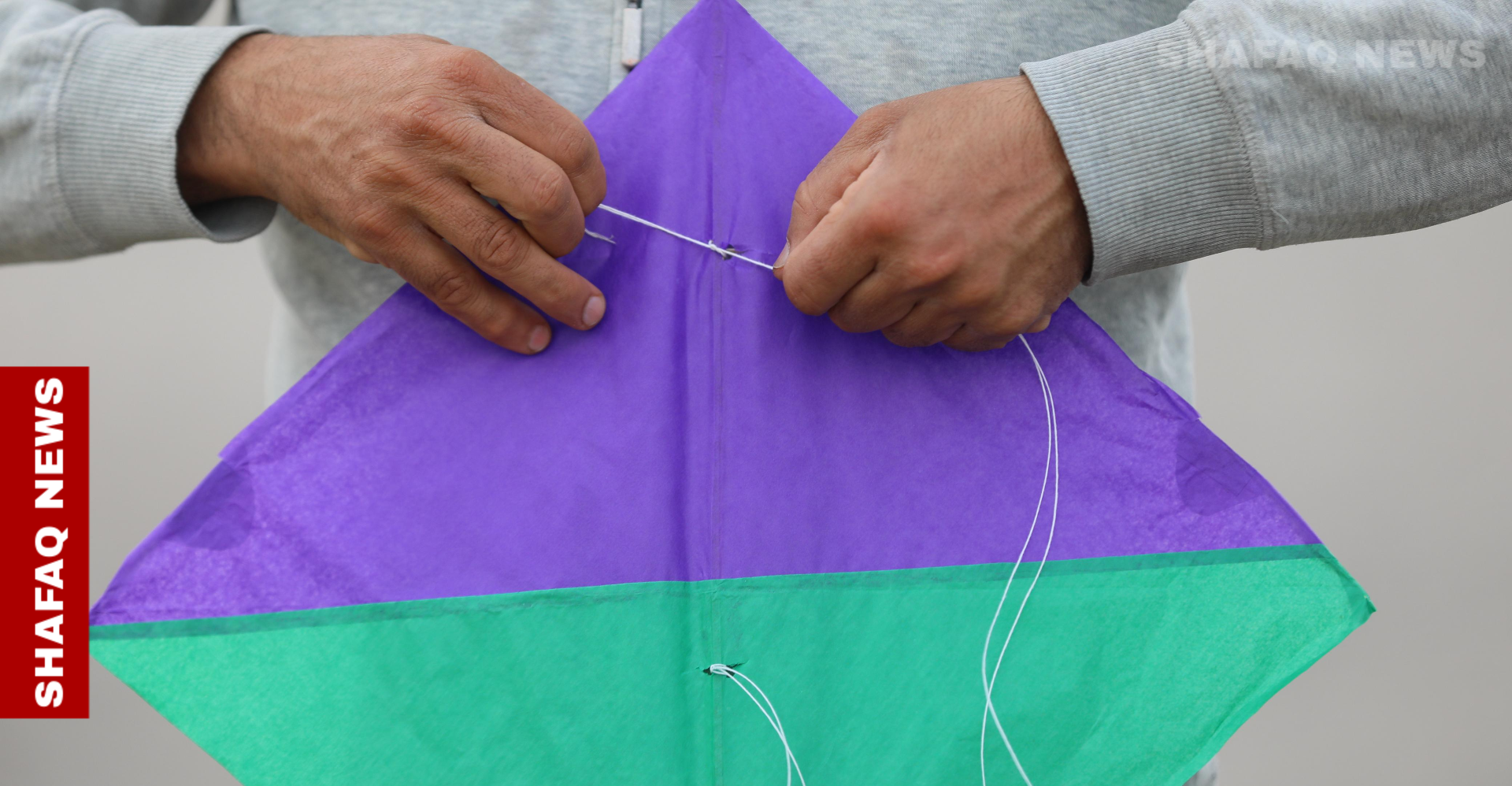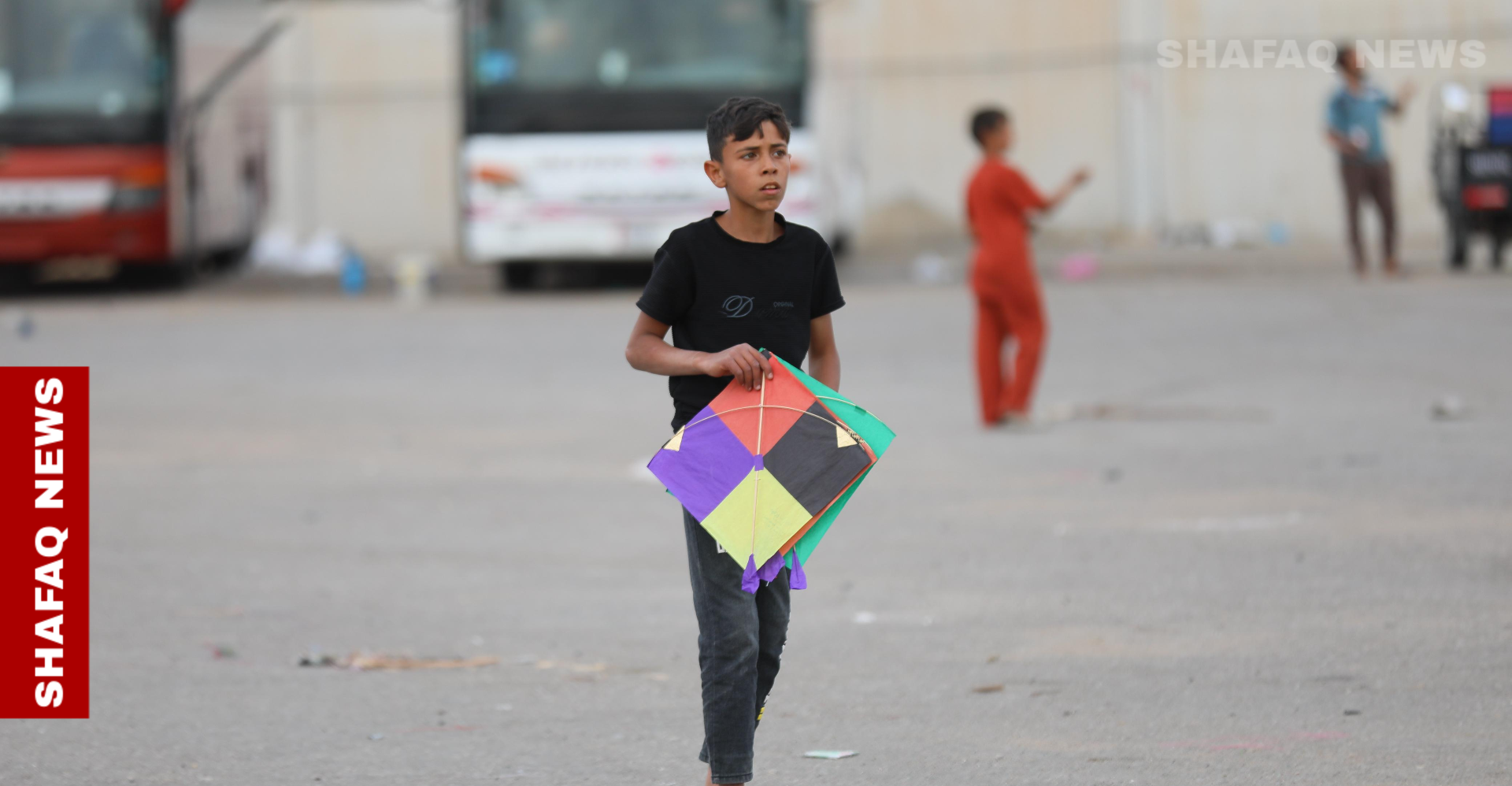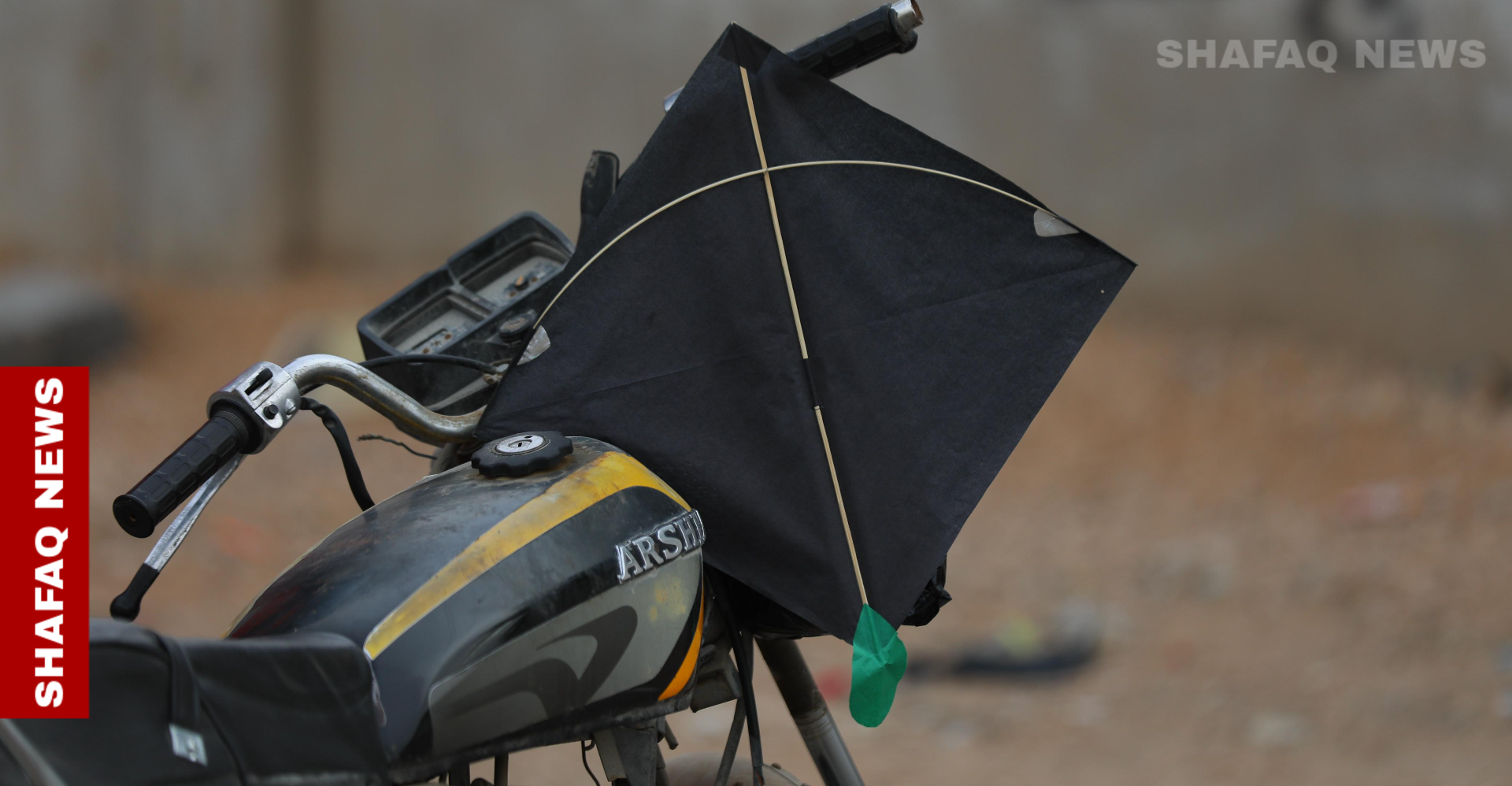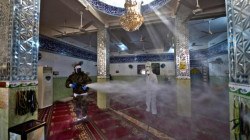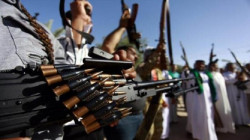Kites in Karbala: A 100-year-old legacy
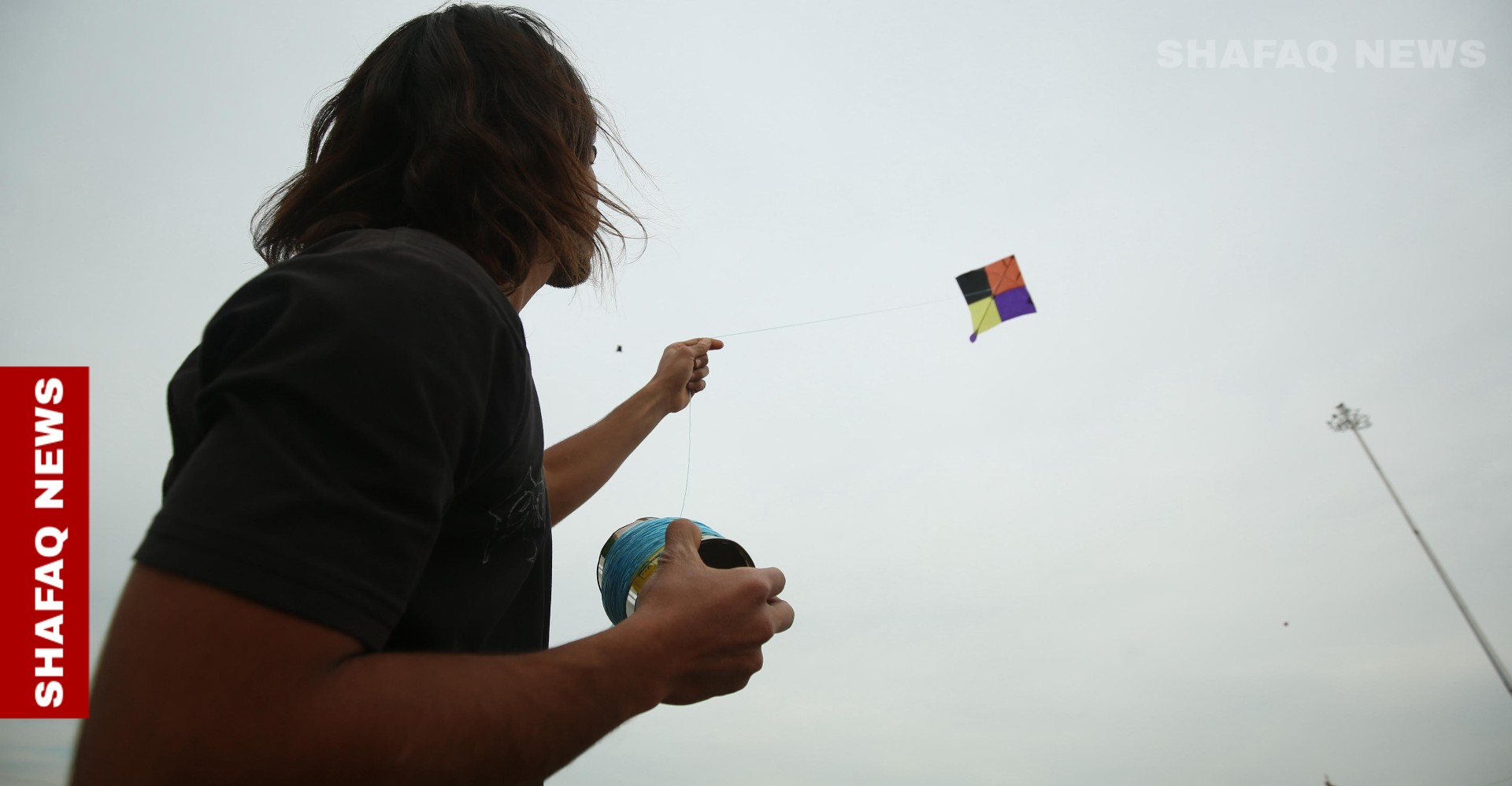
Shafaq News/ The simple pleasure of kite flying continues to captivate generations despite the rise of modern entertainment and technology. This timeless Iraqi tradition remains a beloved pastime.
The roots of this tradition date back to the early 20th century when British forces entered Iraq. Among the soldiers were Indian troops who brought with them the popular pastime of kite flying, a hobby that had been enjoyed in their homeland for centuries.
The people of Karbala were among the first to embrace this new form of recreation. Every year, before breaking their fast at Iftar during Ramadan, young and old gather to release their kites into the sky. While the tradition initially flourished only during Ramadan nights, it has extended into the days leading up to the holy month, reinforcing its cultural significance.
What was once a simple amusement has evolved into a competitive sport, with participants engaging in friendly but intense battles. The objective is to cut the strings of opposing kites by skillfully maneuvering one's own. The sport demands not only physical dexterity and strategic thinking but also a deep understanding of the wind and the timing of attacks.
Kites are carefully designed to meet individual preferences, with vibrant colors and intricate shapes. The strings used to fly these kites are typically made of 100% cotton, a material that enhances their durability and allows for precise control. The sticky, smooth coatings applied to the string help ensure that kites are strong enough to withstand intense aerial challenges—particularly in the competitive events that have become an integral aspect of the pastime.
